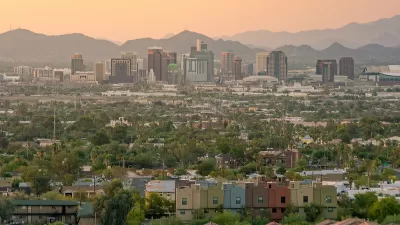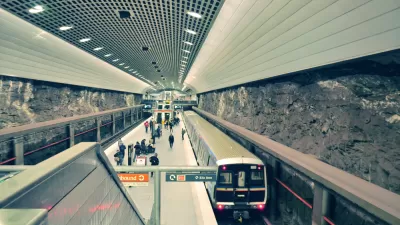Smart Growth America surveyed five examples of transit oriented developments from around the country and found a common characteristics: all of the projects have way too much parking.

"Auto-centric standards and zoning requirements have led to too much parking being built around transit stations, leaving many parking spaces empty and wasting valuable land that could be better used," reports Katherine Shaver.
Shaver is sharing information from a new study released by Smart Growth America, titled "Empty Space: Real parking needs at five TODs."
The study examined five transit-oriented developments, in Washington, Los Angeles, Oakland, and near Seattle and Denver. None of the developments "generated enough parking to fill even half the number that planning industry standards would have suggested," explains Shaver. Moreover, "in some cases, about one-third of the parking spaces that would be recommended for a new development under industry standards were actually used, even at peak times."
Angie Schmitt also details the new report in a post for Streetsblog USA.
FULL STORY: Cities, suburbs are requiring too much parking near transit stations, study says

Alabama: Trump Terminates Settlements for Black Communities Harmed By Raw Sewage
Trump deemed the landmark civil rights agreement “illegal DEI and environmental justice policy.”

Planetizen Federal Action Tracker
A weekly monitor of how Trump’s orders and actions are impacting planners and planning in America.

Why Should We Subsidize Public Transportation?
Many public transit agencies face financial stress due to rising costs, declining fare revenue, and declining subsidies. Transit advocates must provide a strong business case for increasing public transit funding.

Understanding Road Diets
An explainer from Momentum highlights the advantages of reducing vehicle lanes in favor of more bike, transit, and pedestrian infrastructure.

New California Law Regulates Warehouse Pollution
A new law tightens building and emissions regulations for large distribution warehouses to mitigate air pollution and traffic in surrounding communities.

Phoenix Announces Opening Date for Light Rail Extension
The South Central extension will connect South Phoenix to downtown and other major hubs starting on June 7.
Urban Design for Planners 1: Software Tools
This six-course series explores essential urban design concepts using open source software and equips planners with the tools they need to participate fully in the urban design process.
Planning for Universal Design
Learn the tools for implementing Universal Design in planning regulations.
Caltrans
Smith Gee Studio
Institute for Housing and Urban Development Studies (IHS)
City of Grandview
Harvard GSD Executive Education
Toledo-Lucas County Plan Commissions
Salt Lake City
NYU Wagner Graduate School of Public Service





























